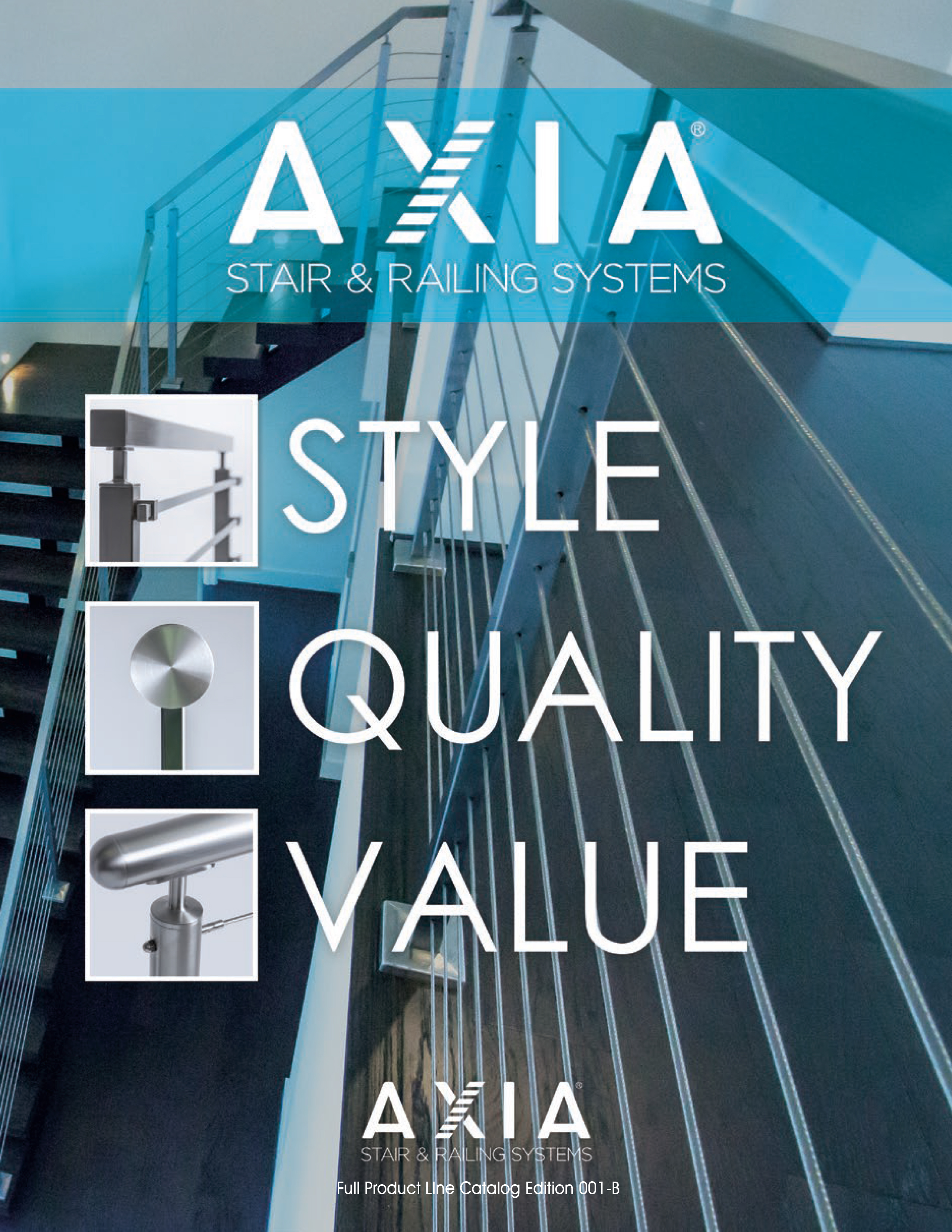Shop By Category
-
Stair Parts
- Stair Parts
-
Box Newel Posts
-
Newels & Balusters
- Newels & Balusters
-
Colonial Stair Parts
- Bunker Hill Stair Parts
-
Hampton Stair Parts
-
The Classic Stair Systems
- Contemporary and S4S Newels & Balusters
- Mission Style
- The Carolina Collection
- Fitts Sheraton
- Sheraton Newel Posts
- Chippendale Series
- WM-Coffman Newels and Balusters
- LaScala Newels and Balusters
-
Handrails
- Handrails
-
Traditional Stair Handrails
- Traditional Stair Handrails
-
6010 Handrail
- 6010 Handrail
- 6010 Handrail Fittings
- 6010 Red Oak Handrail
- 6010 Poplar Handrail
- 6010 Hard Maple Handrail
- 6010 Cherry or Alder Handrail
- 6010 Hickory Handrail
- 6010 Soft Maple or Ash Handrail
- 6010 Mahogany Handrail
- 6010 White Oak Handrail
- 6010 Beech Handrail
- 6010 Walnut Handrail
- 6010 Brazilian Cherry Handrail
- 6010 Birch Handrail
- 6010 Pine Handrail
- 6010 Hemlock Handrail
- C-6010 Handrail
- 6210 Colonial Handrail
- 9100 Stair Handrail
- 6400 Stair Handrail
- 6910 Stair Handrail
- 6710 Stair Handrail
- 6519 Stair Handrail
- 6310 Stair Handrail
- Various Traditional Handrails
-
CONTEMPORARY AND ROUND HANDRAILS
- Handrail Accessories
-
Stair Treads and Risers
-
Stair Accessories
-
Iron Balusters
- Iron Balusters
-
House of Forgings Iron Balusters
- House of Forgings Iron Balusters
- Tuscan Round Iron Balusters
- Tuscan Square Hammered Balusters
- Monte Carlo Series
- Orleans Square Hammered Balusters
- Gothic Iron Balusters
- Round Iron Balusters
- Ribbon and Basket Iron Balusters
- Designer Tubular Balusters
- Versatile Iron Balusters
- Twist and Basket Iron Balusters
- Scroll Iron Balusters
- Stainless Steel Balusters
- Forged Iron Panels
- Wentworth Collection
- AALTO Collection
- AXIA Stair Systems
- Heights Collection
- Horizontal Railing
- MEGA Collection
- HOF Shoes and Accessories
- Dorado Gold
- Foundation Balusters
- Harmony Collection
- SoHo Balustrade
- ForestKraft
- Auro Hardware Collection
- Elements Modern Railing System
-
Ascension Stair Parts
- Ascension Stair Parts
- Twist and Basket Series
- Versatile Series
- Gothic Series
- Scroll Series
- Ribbon Series
- 2G 16mm Square and Round Balusters
- Round 12mm Balusters
- Taos and Tuscan Series
- Source Ascension Baluster Accessories
- Stainless Steel Tubing by Ascension
- Stainless Steel Stair Parts
- Ascension Stealth Cable Systems
- Ascension Iron Newel Posts
-
Indital Stainless Steel
- Indital Stainless Steel
-
Stainless Steel
- Stainless Steel
- Anchrages
- Handrail Supports
- Round Bars
- End Caps
- Steel Spheres
- Wire Ropes & Accessories
- Curves and Fittings
- Flange and Canopies
- Inserts and Mandrels
- Bar Holders and Connectors
- Tools Produucts
- Wood Handrails
- Discs & Mounting Plates
- Newel Posts
- Stainless Steel Tubes
- Glass Clamps and Holders
- Nero Collection
-
WM-Coffman Iron and Tubular Steel
- WM-Coffman Iron and Tubular Steel
- Twist & Basket Series
- Ribbon & Basket Series
- Versatile Series
- Gothic Iron Balusters
- Mega Tubular Steel Stair Balusters
- Knee Wall Balusters
- Round Iron and Steel Balusters
- Scrolls
- Decorative Panels
- Mediterranean Series Iron Balusters
- Shoes and Accessories
- Cube Series
- Coffman Horzontal Bars
- Holmes Stairs
- Crown Heritage Forged Iron
- Fitts Iron Newels and Balusters
- Pearl Fireplace Mantels
- Sale and Clearances
- EkenaMillwork
- Mouldings and Millwork
- Spiral Staircases
- Stair Parts
-
Box Newel Posts
-
Newels & Balusters
- Newels & Balusters
-
Colonial Stair Parts
- Bunker Hill Stair Parts
-
Hampton Stair Parts
-
The Classic Stair Systems
- Contemporary and S4S Newels & Balusters
- Mission Style
- The Carolina Collection
- Fitts Sheraton
- Sheraton Newel Posts
- Chippendale Series
- WM-Coffman Newels and Balusters
- LaScala Newels and Balusters
-
Handrails
- Handrails
-
Traditional Stair Handrails
- Traditional Stair Handrails
-
6010 Handrail
- 6010 Handrail
- 6010 Handrail Fittings
- 6010 Red Oak Handrail
- 6010 Poplar Handrail
- 6010 Hard Maple Handrail
- 6010 Cherry or Alder Handrail
- 6010 Hickory Handrail
- 6010 Soft Maple or Ash Handrail
- 6010 Mahogany Handrail
- 6010 White Oak Handrail
- 6010 Beech Handrail
- 6010 Walnut Handrail
- 6010 Brazilian Cherry Handrail
- 6010 Birch Handrail
- 6010 Pine Handrail
- 6010 Hemlock Handrail
- C-6010 Handrail
- 6210 Colonial Handrail
- 9100 Stair Handrail
- 6400 Stair Handrail
- 6910 Stair Handrail
- 6710 Stair Handrail
- 6519 Stair Handrail
- 6310 Stair Handrail
- Various Traditional Handrails
-
CONTEMPORARY AND ROUND HANDRAILS
- Handrail Accessories
-
Stair Treads and Risers
-
Stair Accessories
- Iron Balusters
-
House of Forgings Iron Balusters
- House of Forgings Iron Balusters
- Tuscan Round Iron Balusters
- Tuscan Square Hammered Balusters
- Monte Carlo Series
- Orleans Square Hammered Balusters
- Gothic Iron Balusters
- Round Iron Balusters
- Ribbon and Basket Iron Balusters
- Designer Tubular Balusters
- Versatile Iron Balusters
- Twist and Basket Iron Balusters
- Scroll Iron Balusters
- Stainless Steel Balusters
- Forged Iron Panels
- Wentworth Collection
- AALTO Collection
- AXIA Stair Systems
- Heights Collection
- Horizontal Railing
- MEGA Collection
- HOF Shoes and Accessories
- Dorado Gold
- Foundation Balusters
- Harmony Collection
- SoHo Balustrade
- ForestKraft
- Auro Hardware Collection
- Elements Modern Railing System
-
Ascension Stair Parts
- Ascension Stair Parts
- Twist and Basket Series
- Versatile Series
- Gothic Series
- Scroll Series
- Ribbon Series
- 2G 16mm Square and Round Balusters
- Round 12mm Balusters
- Taos and Tuscan Series
- Source Ascension Baluster Accessories
- Stainless Steel Tubing by Ascension
- Stainless Steel Stair Parts
- Ascension Stealth Cable Systems
- Ascension Iron Newel Posts
-
Indital Stainless Steel
- Indital Stainless Steel
-
Stainless Steel
- Stainless Steel
- Anchrages
- Handrail Supports
- Round Bars
- End Caps
- Steel Spheres
- Wire Ropes & Accessories
- Curves and Fittings
- Flange and Canopies
- Inserts and Mandrels
- Bar Holders and Connectors
- Tools Produucts
- Wood Handrails
- Discs & Mounting Plates
- Newel Posts
- Stainless Steel Tubes
- Glass Clamps and Holders
- Nero Collection
-
WM-Coffman Iron and Tubular Steel
- WM-Coffman Iron and Tubular Steel
- Twist & Basket Series
- Ribbon & Basket Series
- Versatile Series
- Gothic Iron Balusters
- Mega Tubular Steel Stair Balusters
- Knee Wall Balusters
- Round Iron and Steel Balusters
- Scrolls
- Decorative Panels
- Mediterranean Series Iron Balusters
- Shoes and Accessories
- Cube Series
- Coffman Horzontal Bars
- Holmes Stairs
- Crown Heritage Forged Iron
- Fitts Iron Newels and Balusters
AXIA Stair Systems
AXIA Stair System

Download – Axia Stainless Steel 2020 Catalog Download – Axia Systems Design Guide
Stainless steel
In metallurgy, stainless steel, also known as inox steel or inox from French inoxydable (inoxidizable), is a steel alloy with a minimum of 10.5% chromium content by mass.
Stainless steel is notable for its corrosion resistance, and it is widely used for food handling and cutlery among many other applications. Stainless steel does not readily corrode, rust or stain with water as ordinary steel does. However, it is not fully stain proof in low-oxygen, high-salinity, or poor air-circulation environments.
There are various grades and surface finishes of stainless steel to suit the environment the alloy must endure. Stainless steel is used where both the properties of steel and corrosion resistance are required. Stainless steel differs from carbon steel by the amount of chromium present. Unprotected carbon steel rusts readily when exposed to air and moisture. This iron oxide film (the rust) is active and accelerates corrosion by making it easier for more iron oxide to form. Since iron oxide has lower density than steel, the film expands and tends to flake and fall away. In comparison, stainless steels contain sufficient chromium to undergo passivation, forming an inert film of chromium oxide on the surface. This layer prevents further corrosion by blocking oxygen diffusion to the steel surface and stops corrosion from spreading into the bulk of the metal. Passivation occurs only if the proportion of chromium is high enough and oxygen is present in it.
Stainless steel’s resistance to corrosion and staining, low maintenance, and familiar lustre make it an ideal material for many applications.









